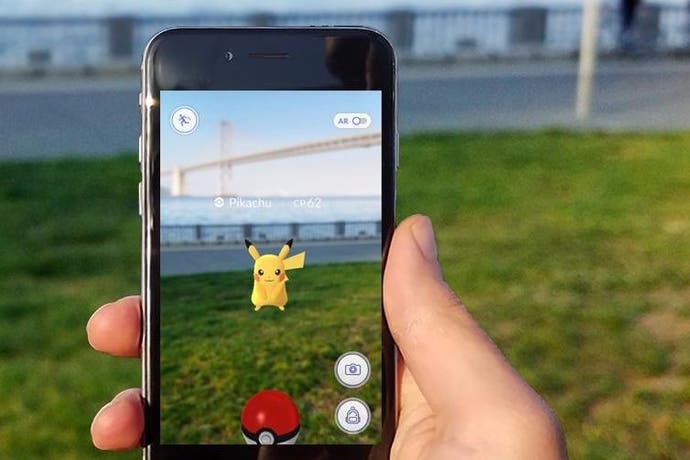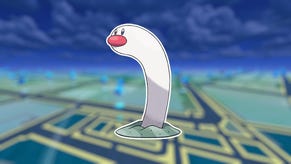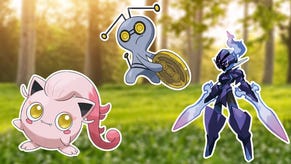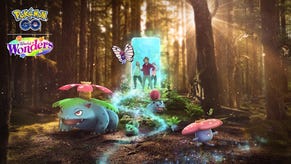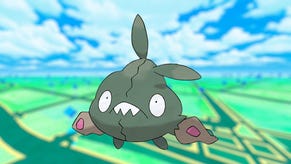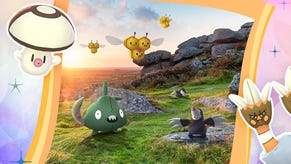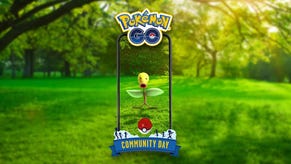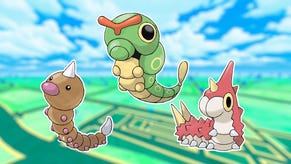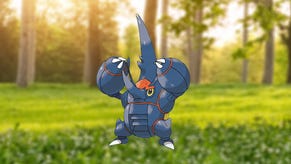Pokémon Go developer wants it to last as long as World of Warcraft
"The summer was quite painful."
After everything that's happened in 2016, it can be difficult to remember this year's positive moments. But, over the past 11 months, one thing - a certain game's release - stands out.
Pokémon Go was inescapable. For weeks, it dominated online and real-world discussion and soaked up the lives of those playing. Even if you didn't play it yourself, you likely saw the gangs of kids (and overgrown children) who were, roaming the streets, absorbed by the virtual monsters around them.
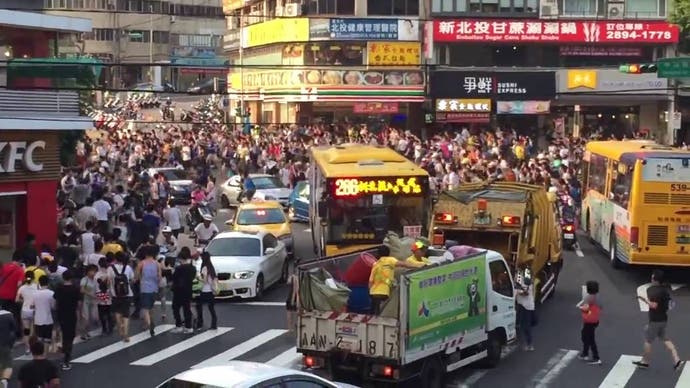
It's hard to overstate its impact. Pokémon Go broke all kinds of download records, overtook every app including Facebook for the amount of time users spent on it per day, and shot to the very top of the global zeitgeist - referenced by Donald Trump, The Simpsons, and here in the UK, er, Jeremy Corbyn.
Many assumed Pokémon Go was made by Nintendo - including the company's own investors. Instead, the app's development is the work of Niantic, a small team of engineers and designers in San Francisco, recently split from Google. But you'd be forgiven for not knowing. Through Pokémon Go's initial highs - the crowds of people playing together in parks, running to catch rare creatures - and lows - the game's overwhelmed servers and reports of crime experienced while playing - Niantic remained very much in the background.
After a while, players began wondering when Pokémon Go's highly-anticipated new features would release. Fans were also angered when Niantic blocked popular third-party services such as Pokévision, which greatly enhanced the app but also gobbled up its limited server power. Suddenly, Niantic's silence was a problem. It took several weeks for the developer to finally get ahead of Pokémon Go's performance issues and longer to launch even minor new features. By this time, interest had inevitably faded, and Niantic was left with the job of proving to the remaining fans it would deliver the updates which Pokémon Go so desperately needed.
Four months on from Pokémon Go's release and the app is now a lot more stable. The past few weeks have seen a steady stream of new features, and the game has just concluded its first proper event for Halloween - which saw US daily users up nearly 20 per cent.
This week we sat down with Niantic's chief marketing officer Mike Quigley to talk about Pokémon Go's whirlwind launch and the studio's subsequent struggle to gain stability - and to peek ahead at what will come to the game next.
"The fire-fighting has ceased," Quigley begins, when I ask how the past few months has gone. "Now, we can get back to developing core features."

We're sat in the restaurant of a five-star London hotel, where Quigley is holding a round of media interviews. He's touring Europe to speak at the Web Summit in Lisbon, before appearing at an event for Ingress, Niantic's first augmented reality game, in Rome at the weekend. It certainly feels like the studio has finally found itself some breathing time.
"There's no way to sugarcoat it, we were overwhelmed by how [Pokémon Go] took off," he continues. "The success of the product caught us out of position in a couple of areas - we fully admit it. The summer was quite painful - no one slept much. But this has always been a marathon not a sprint. You can look back at Ingress and see that."
No one could have predicted the huge public response to Pokémon Go. Of course, it was a new game in a series with a huge amount of popularity and a growing sense of nostalgia among players of a certain age. But it wasn't a major Pokémon game, and it wasn't made by Nintendo (even if many people didn't realise). Most of all, the technology behind it was largely untested. Sure, Ingress had been around for several years, but its blend of augmented-reality gameplay had always enjoyed only a niche audience.
Then again, Niantic hadn't even hired a Pokémon Go community manager when the game launched. In those early weeks, with little to no communication from Niantic to fans, surely the company could have done more to be prepared?
"We're still small - at the end of this summer we were only 65, 70 people," Quigley replies. "We want to double that over the course of the next year. We're trying to prioritise and get to the most important things first and others when we can.
"We can look back and wish we had more resources for certain things, but we kind of weathered it and hopefully people say 'oh, we are hearing from them more now, there's more transparency'. And for what it's worth, regardless of headcount or staffing, one of the reasons people weren't hearing from us is that there were so many things going on with servers and stuff that was, frankly, distracting the company. We just wanted to make sure the game was still up and running. That took everyone and their focus to take care of things."
It doesn't sound like Quigley wants to discuss specifics of Niantic's office culture during those early few weeks, but the word "craziness" comes up.
I ask about one story in particular which Eurogamer covered extensively - that, amid the confusion of launch and what still feels like a lack of communication between overworked Niantic employees - legendary Pokémon such as Articuno (still unattainable to all players) were released to a handful of fans.
"That was a mistake," Quigley admits. The Pokémon were removed from fan accounts shortly after others noticed.
A far larger controversy erupted when Niantic blocked third-party apps like Pokévision, which fans had built to supplement the game. These provided handy features such as stat checkers and maps to see where Pokémon had spawned by pinging the game's servers. For a while, Niantic seemed like it would put up with extra load created by the apps but, overnight, all of them were blocked. The change came without warning, and the need for it - to cut server load - was not well explained.
"They were just crushing us on the server side," Quigley remembers. "I won't say it's a no-win situation but it's a tough balance. You've got to keep fans happy but you also have to keep the core product accessible."
"Some of the server outages back in July were a punch in stomach. For us, for fans, for The Pokémon Company too - it's not a good signal for their brand. We're very close to them and we have to do right by the brand, by our players and Niantic. That's why we had to make some of those hard decisions like blocking third-party sites. It's difficult but ultimately it's the right thing to do for the life of the product."
Ask Niantic about that lifespan and you get an answer you might not expect. Whether you believe it or not, Niantic are focused on maintaining Pokémon Go not as a simple mobile game but as if it was an MMO. It's an easy thing to say when your mobile game is no longer the world's focus, but Niantic has history in this regard: with Ingress.

"Yes, we looked at mobile game curves and yes we modelled some of this, although the initial curve was far higher than expected," Quigley says when I ask about current user numbers. "As for how we modelled it, we're trying not to get distracted by [headlines like] 'There's a huge fall-off! Pokémon Go's dead!'. There's a lot of those stories which have been written. We're like, 'guys, it's just noise. We know what we're doing, we know what we want to build. We're listening to the community.
"But we are more an MMO than anything else. We have two week client sprints, two week server-side sprints. Every two weeks there's new content or bug fixes going in the game. There's key content releases we're planning.
"I think our lifespan and curve may be quite different from a free-to-play mobile game - it may be more in a [World of] Warcraft vein just because of the type of game we are. It's not about taking a bunch of money off the table and going. Monetisation has never been the focus for us. It's about doing right by the brand and doing right by the fans."
Niantic is continuing to work on features which replicate the third-party apps within the game - and which don't overload Pokémon Go's servers. But more on those in a moment. Away from the challenges of launching 2016's biggest mobile success, there has been plenty for Niantic to already celebrate. The most recent user stats speak for themselves: 500m installs. 3bn km walked by users while playing the game.
"The fans kept us going," he continues. "We'd go out after a 12 or 14 day and see people playing - that was better than an adrenaline shot. Red Bull is great but fans kept us going," he laughs.
"And they kept us honest. They're critical and they should be. There are expectations from two decades of Pokémon and expectations on Niantic to deliver a quality experience. The best part of the last year - because we've taken some lumps and the hardest part of working with [Pokémon] is the expectations - but for us it's that we know we're just getting started."
Since the launch of buddy Pokémon in September, the app has gained Pokémon Go Plus accessory support, improved gym battling, daily activity bonuses, and its Halloween event. It has also launched in a further 40 new countries and territories. In the past week, the app's long-awaited Nearby tracker function has also, finally, been rolled out to new areas of the US after being stuck in beta, and just in Niantic's home of San Francisco.
"Hopefully, over time, we're going to build that trust with fans," Quigley says. "And they may not always know it, you may not always hear from us, but we're listening. We're always listening to community feedback.
"People may have started to give up on Nearby," he laughs, "but you know what - they never stopped telling us about how they wanted it and how much they missed it - and their frustration with us for blocking third-party apps. So, maybe it didn't happen in the timeframe people wanted it but we are getting to it. Right now in small ways and soon in much bigger ways - we are making progress on our product roadmap, doing things which fans want.
"And there are things coming in the next several weeks... I think if you look back on this conversation on December 31st, or the 1st of January, what I've said will be validated. But even that stuff is still the tip of the iceberg - there's a long road to go.
"The community does a good job of APK teardowns so some of these may or may not be known..." he trails off, referencing the huge leak earlier this week where in-game data was spilled onto the internet, revealing plans which pointed to a release for the so-far unavailable Ditto and, further down the line, the 100 monsters which make up Pokémon's second generation.
"We're aware," Quigley smiles. "Sometimes we'll tease things, sometimes not," he says, adding that Niantic enjoys leaving surprises in the game (such as the Eevee evolution trick, or a buddy Pikachu riding on player's shoulders) for players to uncover themselves.
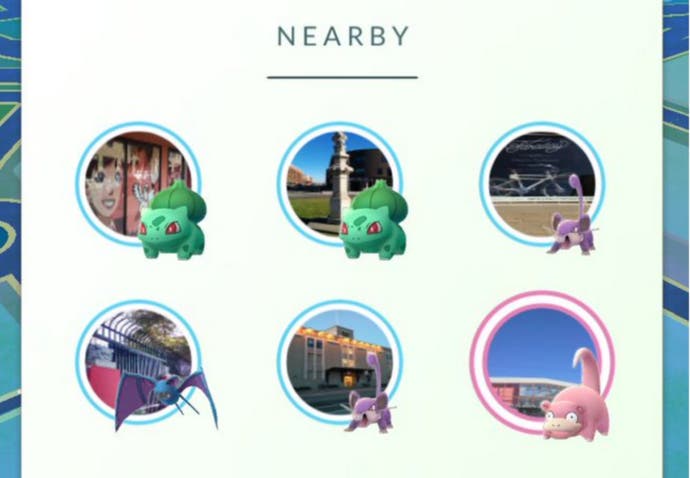
As for the launch of 100 more Pokémon, Quigley noted that some things in the game are only placeholders for the future - and take a long time to get ready for release.
"There are things we have to test days, weeks, months in advance which might make the timeline hard to pinpoint - even for us," he says. "We have a high quality bar, as do fans, as do The Pokémon Company. We're not going to ship features until they hit that. And it's software development - things slip, things happen sooner or later, whenever they're ready. That may be a reason why you hear us say 'yep, that got discovered but we're not ready to talk about it until its ready for primetime'."
A UK launch of the Nearby feature sounds closer on the horizon, and Quigley talks of how the feature will be, like the game itself, gradually rolled-out on a country-by-country basis.
"As we get Nearby rolled out globally we know the feedback will keep coming, hopefully it meets some of the requests, we'll continue to listen, and then maybe there's a V2 of it that comes out. But the [global roll-out] is an early signal that, hopefully, makes people realise 'oh they're going to make up for this' - because we know in terms of the capture gameplay loop how popular third-party services were."
So when will Ditto launch? "Stay tuned," Quigley says.
Is there actually a plan for legendary Pokémon? "Legendaries are very important part of the franchise," he replies, not entirely answering the question. "We do intend to release them so, yes. We do have a plan."
Niantic is contacted every day with requests from fans. They want battling to be better. Fans in India want the game to release there. Kids get in contact about Pokémon they definitely almost caught and now are wondering whether Niantic can gift them into their accounts (the answer is, sadly, no).
Four months on, Pokémon Go is still hugely popular. Not as hugely popular, sure, and players are still waiting for things like trading. But Niantic has experience about supporting something for fans for the long haul - and Pokémon, in no way, is niche.
"As new features start to release, hopefully time will show that yes, those things were in the works," Quigley concludes. "Yes we released and were overwhelmed by server traffic and yes, I wish we had had trading on day one... but if you look back in six or 12 months then hopefully fans will see our iterative process in action. Because, ultimately, the fans are always the judge."
